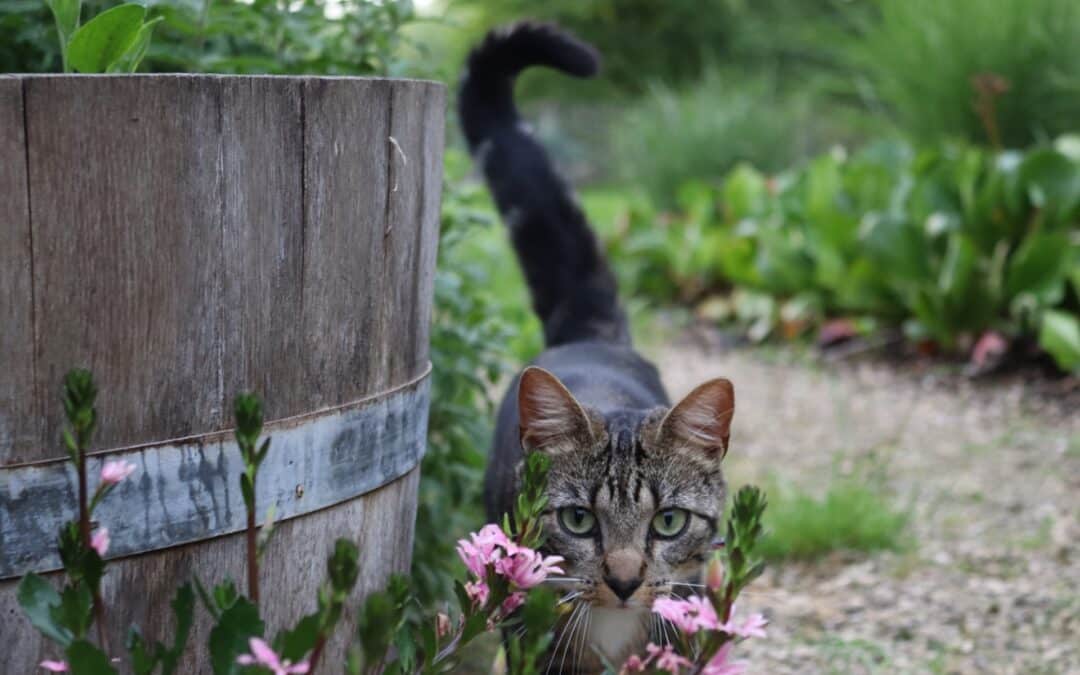Aside from making them look majestic when walking across high or narrow things, tails are essential for your cat’s daily life. They provide balance for leaps and jumps as well as sensory input. Cats also use their tails to communicate. In fact, you can tell a lot about a cat’s mood by the position of their tail.
Cats Need Their Tails for Balance
Cats love to climb up high and traverse narrow walkways which make even experienced cat enthusiasts have their worries. Yet on the rare occasions when they do fall, somehow cats always seem to manage to land on their feet. How do they do it? Their tails!
Cats use their tails as a counterweight. When they walk on top of something narrow, jump, or climb, cats can position their tails to provide more stability. Actually, it’s a lot like the way that we spread our arms when walking along a balance beam. Cats keep their reflexes sharp through play, so that if they ever do fall, their tail will automatically help them find their feet.
Cats Communicate with Tail Language
Our cats do love us, even if they ignore us sometimes. And they communicate with special meows and purrs. But did you know that cats communicate with their tails as well?
A tail that stands straight up means your cat is happy. If their tail starts to thump when you’re petting them, it means “leave me alone.” A tucked tail is often a sign that your cat is scared, while a low swish might indicate that they are about to pounce.
Learning your cat’s tail language is all about observation, so watch their tail positions to learn what they are trying to say.
Cats Also Get Sensory Input from Their Tails
Your cat’s tail is an extension of the spine and it has many nerve endings. Cats use their tails to sense things that might be sneaking up behind them, and they wrap their tails around themselves when they are cold.
A cat’s tail is very sensitive. The large number of nerve endings means that the step of an unwary foot or a harsh tug from a toddler can be extremely painful. Tail injuries can lead to nerve damage, which in turn can cause lameness in the back legs or incontinence. So always check for kitty tails before you close a door!
What If a Cat Does Not Have a Tail?
Some breeds of cats, like the Manx, are born without a tail, and bobtail varieties are born with exceedingly short tails. These cats have inherited a recessive, tailless gene that became dominant through years of breeding.
The lack of a tail does not stop these cats from climbing to scary heights or padding along impossibly narrow walks. They have simply learned to move in different ways than tailed cats do.
If your cat is missing their tail because of an accident, have no fear. The odds of living a normal and healthy life are in their favor. Unless the nerve damage is severe, physical therapy and proper care can have them playing and pouncing just like before.
Tails-Up for Excellent Veterinary Care
We love our cats from nose to tail, and we care for all our patients in the same way. From checkups to vaccinations to emergencies, East Valley Animal Hospital is there for you. Our staff have the knowledge, experience, and the latest technology to ensure that your cat always gets the very best care. If your cat is due for a wellness exam, contact us today to schedule an appointment.
Images used under creative commons license – commercial use (9/20/23). Photo by Ward Vergote on Unsplash.

